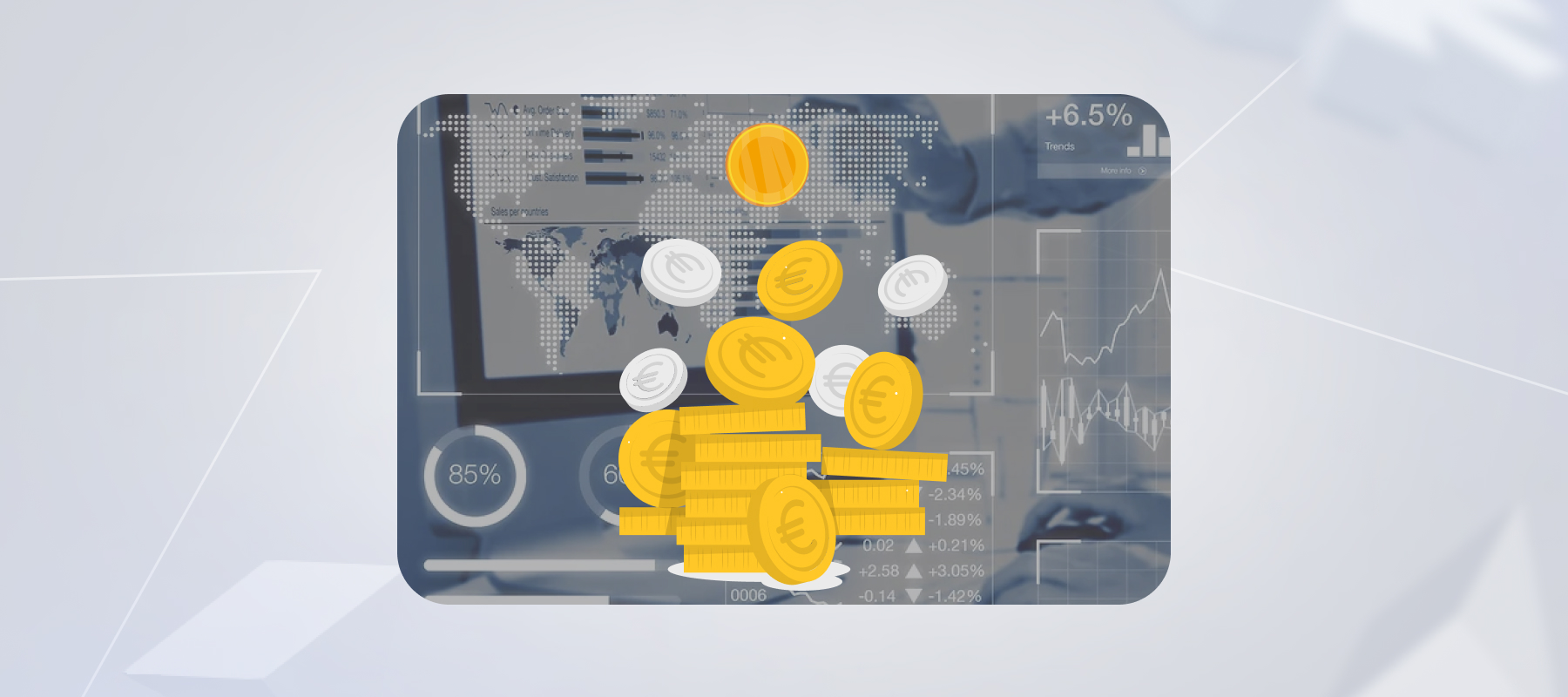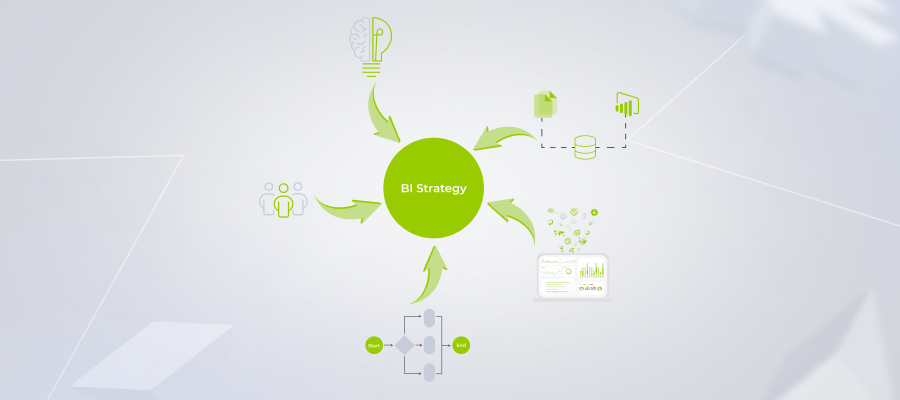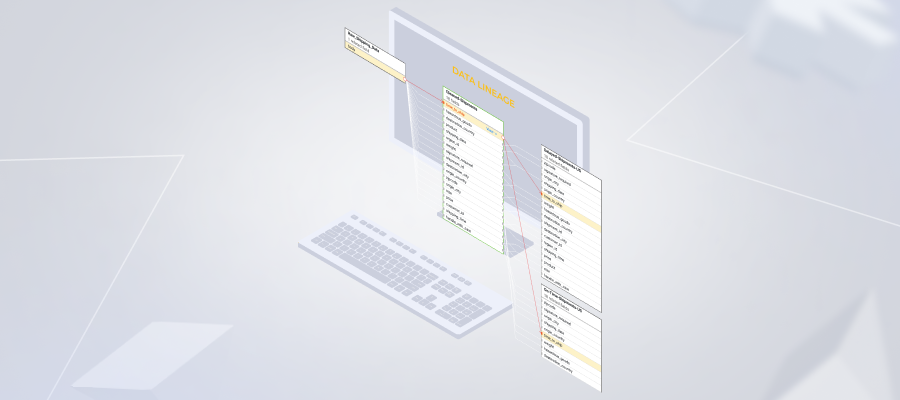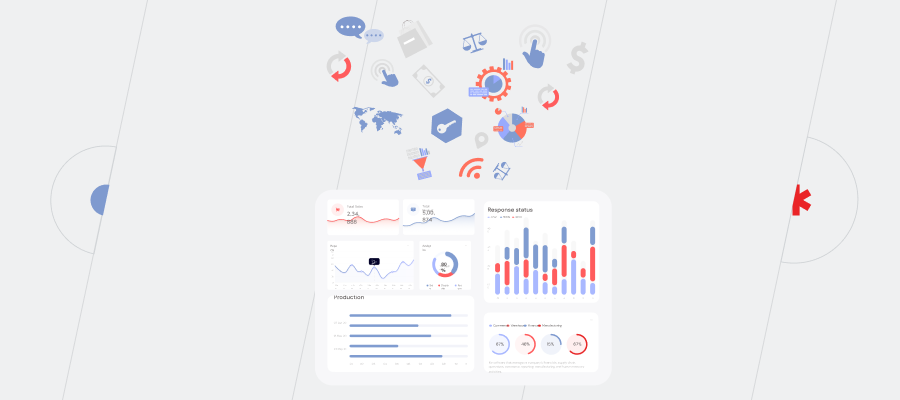Сontents
Schools generate more data than they can handle and can effectively use. Surrounded by all this information, they are still starved for insights though. And it’s no wonder – manually dealing with tons of paper documents or, at best, Excel spreadsheets is a dubious pleasure that requires eons of already limited time.
Fortunately, today’s technology allows educational institutions to make a considerable shift in the way they work. At the same time, neglecting the EdTech trends results in lots of missed opportunities. While some schools are drowning in huge amounts of data, others navigate these waters easily thanks to Business Intelligence (BI). In this article, we investigate how exactly BI helps school administrators, teachers, students, and parents.
What are the education-related challenges that can be handled with the application of Business Intelligence?
Schools have a lot on their plates:
- Allocation of available financial resources. Funding depends on a plethora of factors. The number of students and class sizes, student attendance and academic results, program offerings, and more — all this matters to sponsors. In a situation where schools have to do more with less, they’d better have a clear view of what they actually have.
- Limited resources of teachers. Preparing various learning materials, tracking students’ progress, meeting with parents, filling out reports, – it seems teachers need a time-turner to perform all these tasks. Coupled with the shortage of professionals, such a volume of work is impossible to be handled without the help of technology. Schools need technological support to monitor allocated workloads and provide teachers with a balanced work schedule and sufficient classes size.
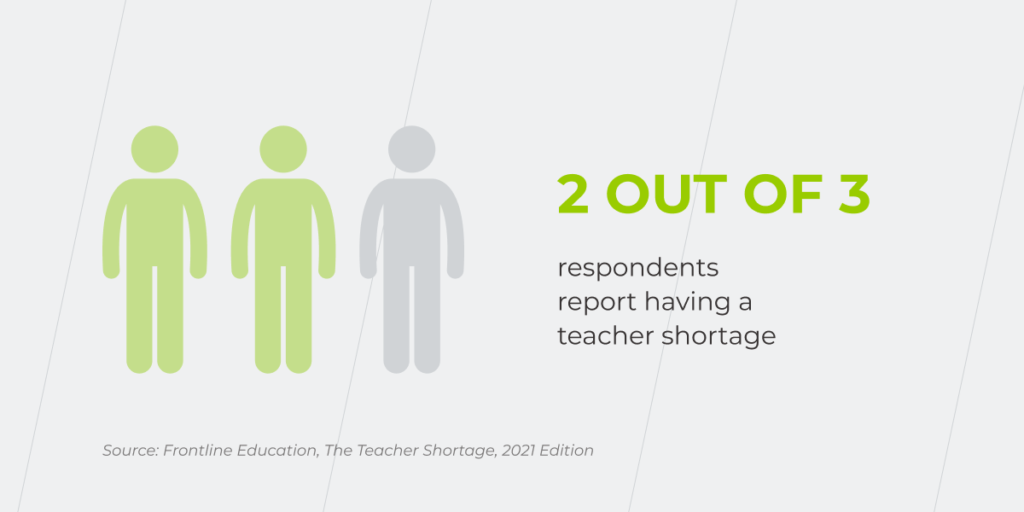
- Massive amounts of paperwork. McKinsey’s research uncovers that automation of 20-40% of teachers’ paper activities will result in freeing 13 hours per week. It would help reduce the teachers’ workload to a normal level, as it now stands at least at 50 hours per week. School administrators will also breathe easier after BI implementation because the technology simplifies administrative management and helps meet reporting requirements faster.
- Standardization of the student experience. A one-size-fits-all approach demotivates students and negatively affects their engagement. It leads to poor performance and makes the school rating worse. Also, parents dissatisfied with their childs’ grades may think that the teachers are to blame and the relationship between them will become tense.
- Parents’ insufficient involvement in the educational process. It’s not surprising, especially if both parents work and the time of the meetings with teachers doesn’t coincide with their free time.
- Lack of school data visibility for sponsors. When people invest in improvements, they obviously want to see where their money goes and how effectively the school is performing.
How is BI technology changing the performance of administrative tasks?
Application of Business Intelligence in education provides school administration with:
1) All the necessary data gathered at one place
All the information is organized in a warehouse so that the school administration doesn’t have to pull data from multiple sources. At the last stages of data processing, the data is visualized in the form of intuitive and easy-to-analyze dashboards within special BI tools such as Power BI, Tableau, Qlik, etc. Let’s take the situation with grants as an example. Schools have to look for funding, but it’s too time-consuming to manually keep track of the grants your school can apply for. Thanks to BI all the information about them can be automatically gathered, analyzed, and then presented to the stakeholders.
2) Streamlined activities
Processes such as managing budgets, ordering resources, paying invoices, handling scheduling, ensuring the school’s compatibility with relevant laws and regulations, hiring staff, and others are time-consuming. Take scheduling, for example. It’s one of the most demanding administration tasks which is almost impossible to put into an algorithm. The planning is always done by a person – BI software won’t automatically create a schedule, but it’ll highlight gaps in a human-generated one. For instance, the Business Intelligence solution will focus your attention on the timetable lapses when the teacher has only the first and fourth lessons, and you’ll be able to manage your employees’ time more appropriately and effectively.
3) Simplified reporting with enhanced visibility of the processes
With BI, data for different kinds of reports, along with the key information for the sponsors is gathered automatically. Instead of numerous tables with text and numbers, it’s wrapped in easy-to-understand data visualizations. When reporting is based on the clear visibility of school processes, the administration can not just grasp information, but get truly valuable insights from it. The analysis of properly organized and presented data helps find new ways of saving money for the school.
4) Ability to predict future changes
BI in education married with Machine Learning (ML) can be used to review where you’ll end up if you decide to make changes or stay on the current track. For example, the technology will help you monitor student enrollment and class size for resource planning and calculating state funding requirements and payments. It works the same way with extracurricular activities such as sporting events, cleaning, security, guest lectures, etc. BI solutions collect the data about them and, based on the spending in previous years, make assumptions about future spending so that you can allocate your budget wisely.
5) Employee visibility
The math teacher’s contract is up next month, the music teacher is going on maternity leave in two months… How many situations like these do you need to keep in mind in order to make decisions about contract extensions or hiring new teachers in time? BI will help you keep track of these dates. Also, Business Intelligence in education can be viewed as a possibility to monitor teachers’ state and workload to prevent their burnout. NEA survey revealed that 55% of teachers in the US are planning to leave education because of burnout. With BI, you’ll be able to notice if some teachers’ schedules are overloaded and reallocate the workload. If you avoid staff turnover, it’ll be an additional value for parents and students as no one is happy when teachers are constantly changing.
6) Easy identification of risky behavior among students
The technology also helps notice, collect, and analyze students’ behavior to conduct risk assessments. Such an approach contributes to making school a safer space. For instance, in a dashboard, teachers can leave notes about students’ behavior. BI solution will visualize the frequency of these comments and the degree of their importance. Using it, the school administration is able to highlight when an individual student’s behavior is disruptive to others, and take measures to prevent these risky behaviors from transforming into major accidents.
7) Increased sponsors’ involvement
Simple, clear analytics helps attract sponsors and keep them engaged in the school initiatives. There’s a long shot they will dig into spreadsheet reports, while informative, convenient dashboards have a higher chance of catching their attention.
Moreover, Business Intelligence in education allows you to generate visuals for sponsors automatically. Without BI software, administration staff usually spend 2-3 weeks to gather and prepare all the necessary information.
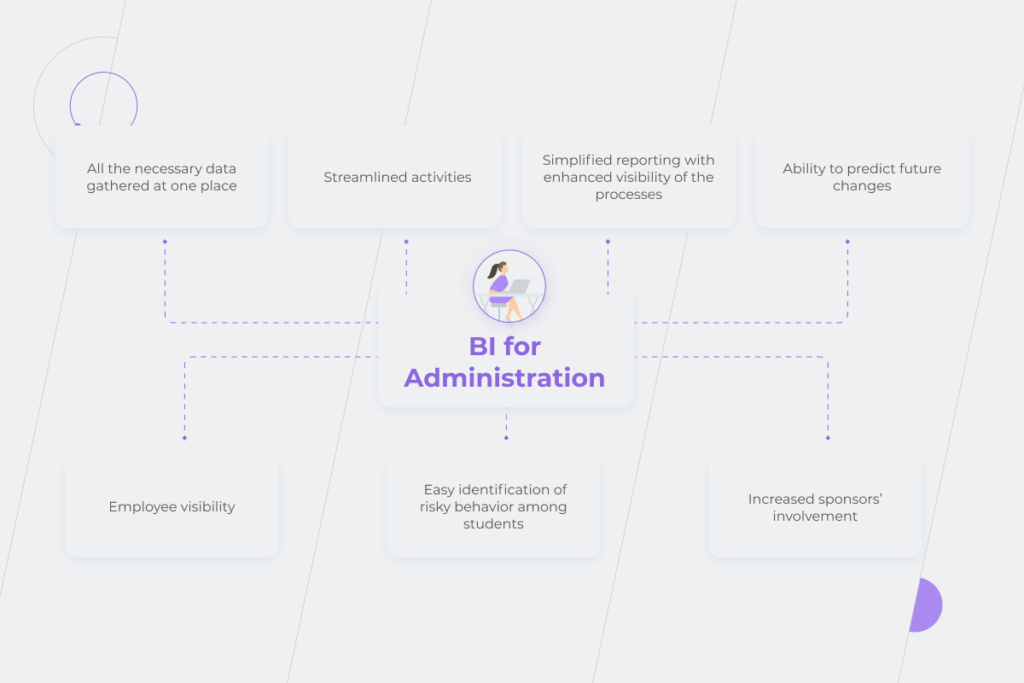
How does BI influence the educational landscape for teachers?
Teachers’ tasks are the ones that can be significantly changed for the better with BI solutions. Application of Business Intelligence in education helps:
1) Reduce time and effort spent on a paperwork
Full-time teachers work 51-57 hours per week and spend more than half of this time on non-teaching activities. It’s no wonder the level of depression among education professionals is much higher than among the general population – 32% vs. 19%. At the same time, almost half of the teachers don’t share their mental health issues with anyone at work as they are afraid of the stigmatization.
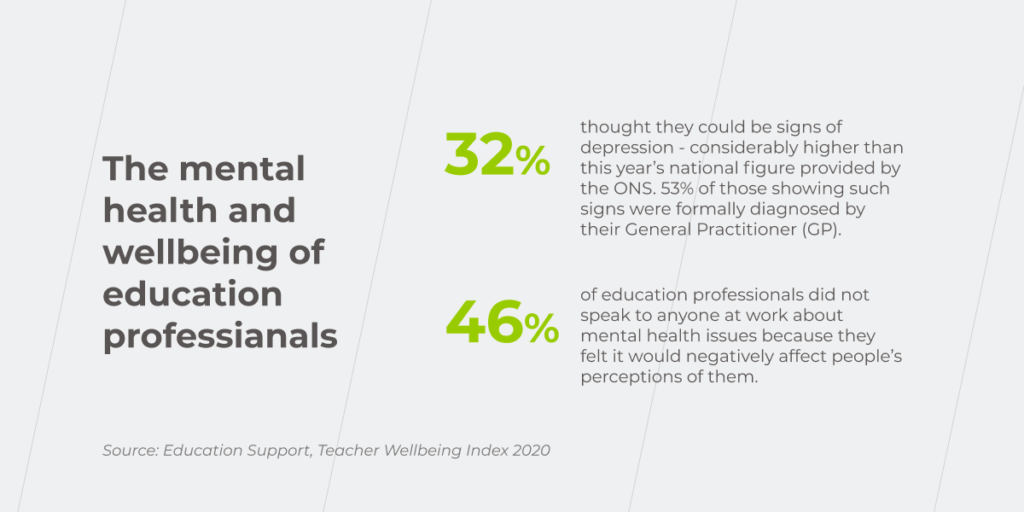
The application of Business Intelligence in education can save teachers from burning the midnight oil and minimize the negative impact on their mental and physical health. Along with taking proper care of your employees’ wellbeing, you can leverage the BI solution to free up teachers’ time so that they are able to catch up with underperforming students or improve their qualifications.
2) Track students’ progress in real-time and swiftly correct it
Having data on students’ performance practically on a silver platter allows teachers to assess their progress, spot talents in time, or identify problems and quickly find the ways to fix them. BI solution helps teachers track students’ learning path continuously instead of a post-factum analysis at the end of the term.
Teachers may have a gut feeling about which students need more attention at some points, but BI software backs up this professional hunch with actual data in an easy-to-understand form. Building spreadsheets to analyze performance and attendance data is time-consuming even for one student, not to mention that the analysis has to be done for an average of 25+ students per class.
Now, imagine that a teacher wants to add a third factor for analysis, for instance, welfare data or family factors such as divorce, single parents, violence, etc., that indicates that a student needs a little more help. This would usually mean the teacher has to start building a new spreadsheet, and it may look like she/he has to give up on their weekend plans to finish the project.
Taking advantage of BI in education, you use teachers’ time more effectively by keeping them busy only analyzing automatically processed information.
3) Involve parents in the educational process with meaningful information on their kids
Organized and structured data is also convenient to be shared with others. It saves teachers’ time to prepare for their meetings with the students’ parents. The freed-up time can be spent on a deeper and more thoughtful analysis of the automatically-collected information.
Here’s an example of a dashboard where classroom teachers can monitor their students’ engagement scores in different subjects, attendance, and performance level in all the disciplines and review these parameters in detail for particular students and subjects.
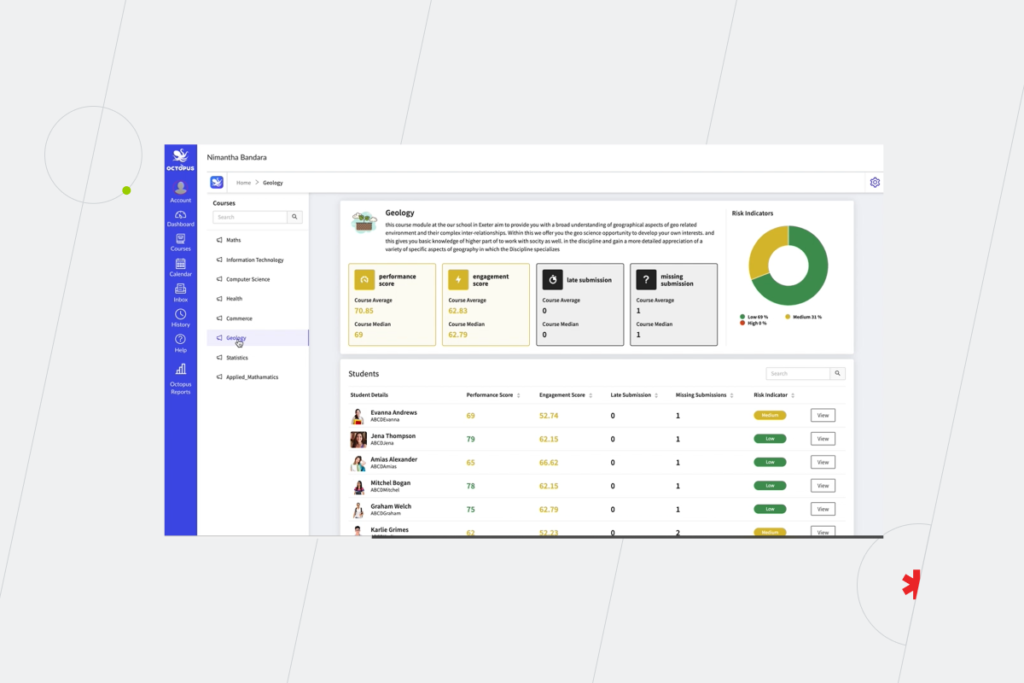
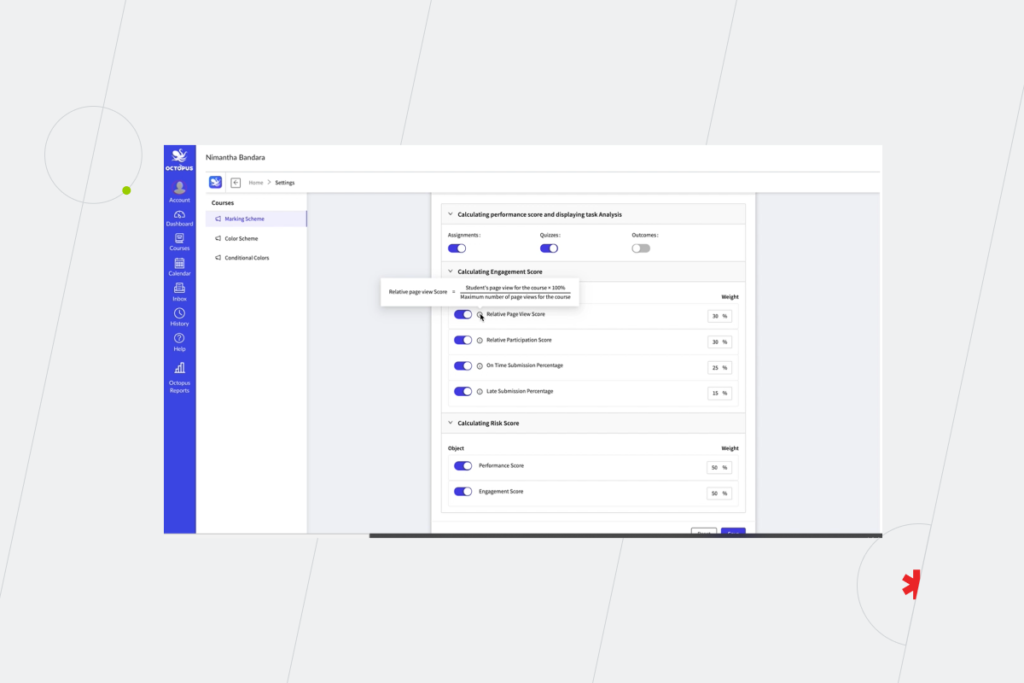
Subject teachers can leave feedback to make it easier for classroom teachers and parents to fully understand students’ success in learning particular topics or the subject in general.
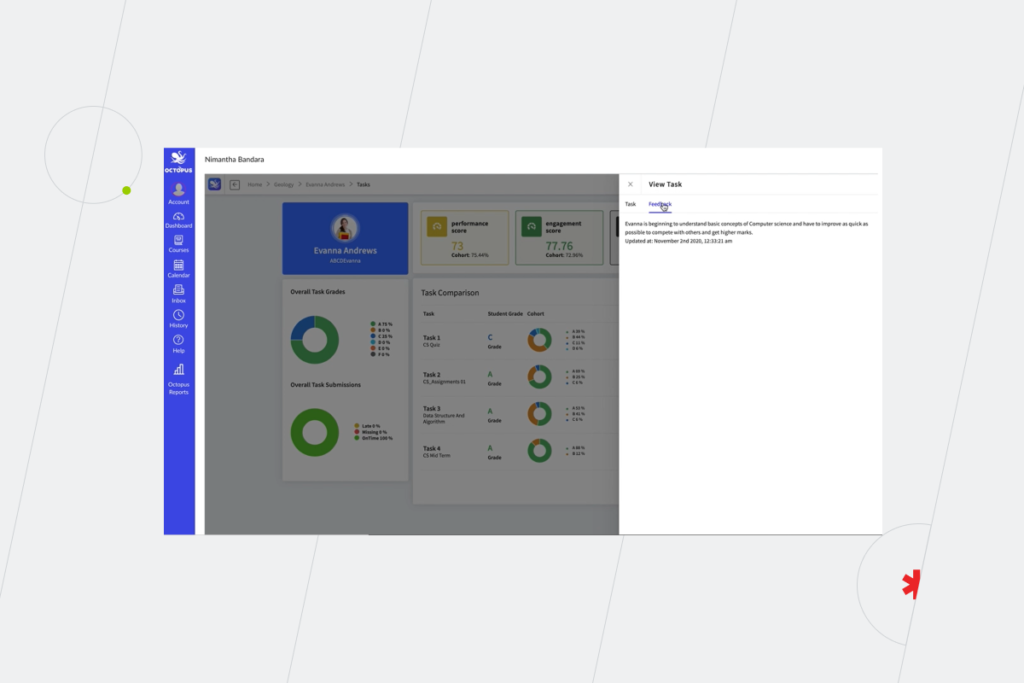
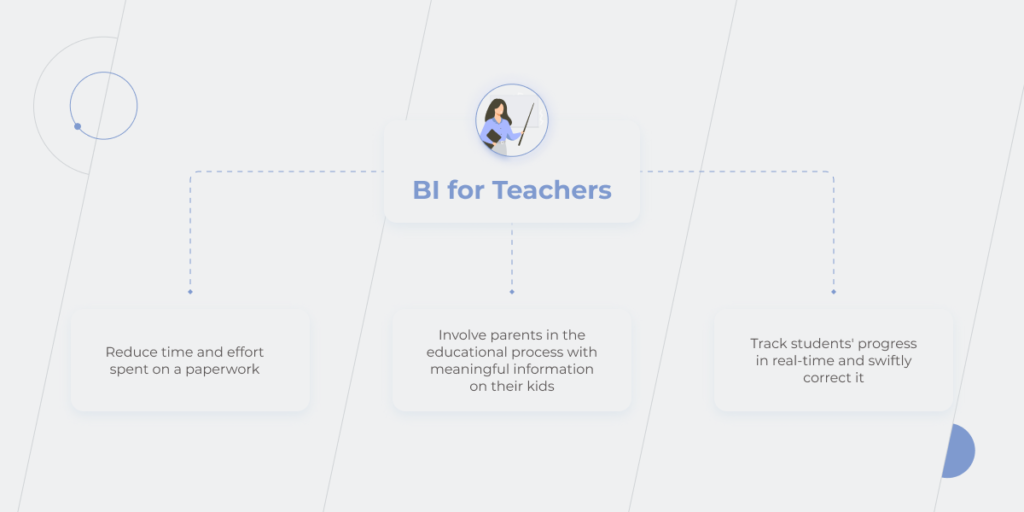
How Business Intelligence in the education sector is helping parents?
As children spend a significant part of their time studying, it’s naturally important for parents to be informed about their kid’s educational activities and wellbeing at school. BI solutions provide parents with:
1) Real-time visibility of their children’s progress and possibility to stay in contact with teachers
The most widespread reason why parents don’t attend school meetings is that they simply can’t do it because of their working schedule. In the US, the percentage of families with children under age 18 and with both parents working full-time is 59.8%, among the European countries the average rate is 61% but in some Scandinavian countries, it exceeds 80%. Technology that simplifies and speeds up conversations between teachers and parents is increasingly valuable in these circumstances.
BI technology allows parents to access data related to what their child is learning. It encourages them to connect with their child’s teacher and download learning materials if the student should do extra tasks to enhance their grades. Thanks to straightforward dashboards, parents can see the actual performance level of their children. The functionality of more complex dashboards gives parents the opportunity to ask teachers questions about the learning process and get their answers or advice.
2) Keeping in close touch with their children
It’s usually easy to ask your elementary school children about how things are going at school – they tend to share how their day went. But getting an answer to the same question from teenagers may be quite tricky. This is where the BI solution can be of much help. By reviewing teachers’ comments in your child’s dashboard, you can better understand their interests and issues, and find the topics to discuss during breakfast or dinner. Such small talks aren’t a small thing. An OECD survey has investigated the relations between student performance and parental involvement in the educational process and showed that only 52% of parents worldwide discuss their children’s wellbeing at school every day or almost every day. Meanwhile, students whose parents do this at least once a week are more likely to declare a high level of life satisfaction and get higher scores.
So, for parents, BI in education makes their child’s school life just a click of a button away.
3) Being aware of the non-academic aspects of children’s school life
Tracking the learning progress of children is essential, but there are also other things parents are interested in, for instance, school meals. With a BI solution, parents can see the breakfast and lunch menu for the month ahead and choose between alternative options such as meat or a vegetarian dish, fruit juice instead of milk, if the student has lactose intolerance. This is especially important for elementary school pupils who, because of their age, cannot always identify whether they can eat certain dishes. And when parents are given the opportunity to decide on a menu in advance, they can avoid the worry that their child will eat something wrong or not eat at all.
If the school cafeteria supports wristband payment technology, parents can also monitor what their children buy and put a limit on the amount of purchases.
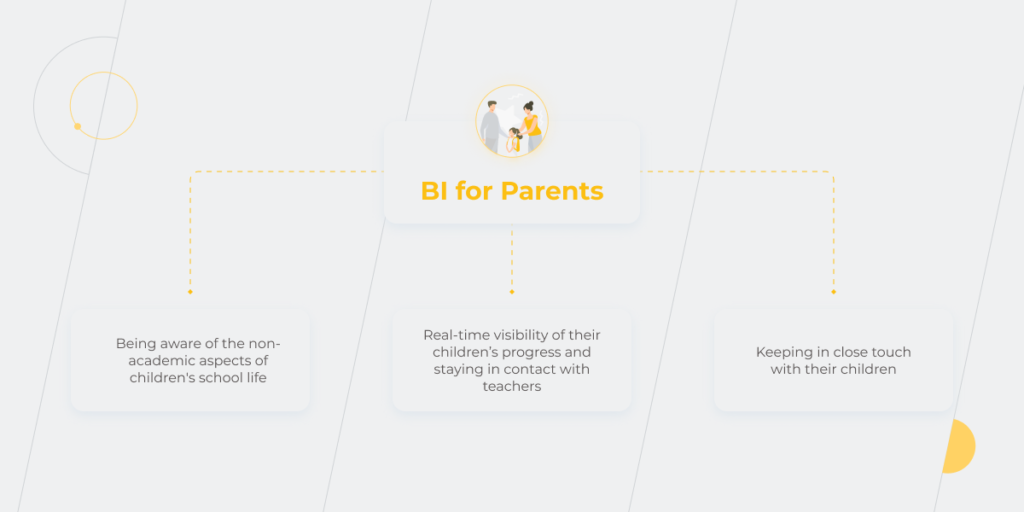
How does BI technology support students?
BI implementation in the education sector ensures better a studying experience, helps students develop their talents, and also creates a safe space for them. The technology offers students:
1) Personalized learning experience
As teachers are able to constantly track the individual performance of each student, they can advise additional materials and personalized worksheets based on the topics the student is stuck with. RAND research shows that students who started below the national norm and then get a chance to leverage personalization in learning reached these norms by the academic year’s end and surpassed them in two years.
“Learners thrive on doing work that’s challenging but possible, and therefore rewarding when it clicks,” shared Brian Galvin, Chief Academic Officer at Varsity Tutors.
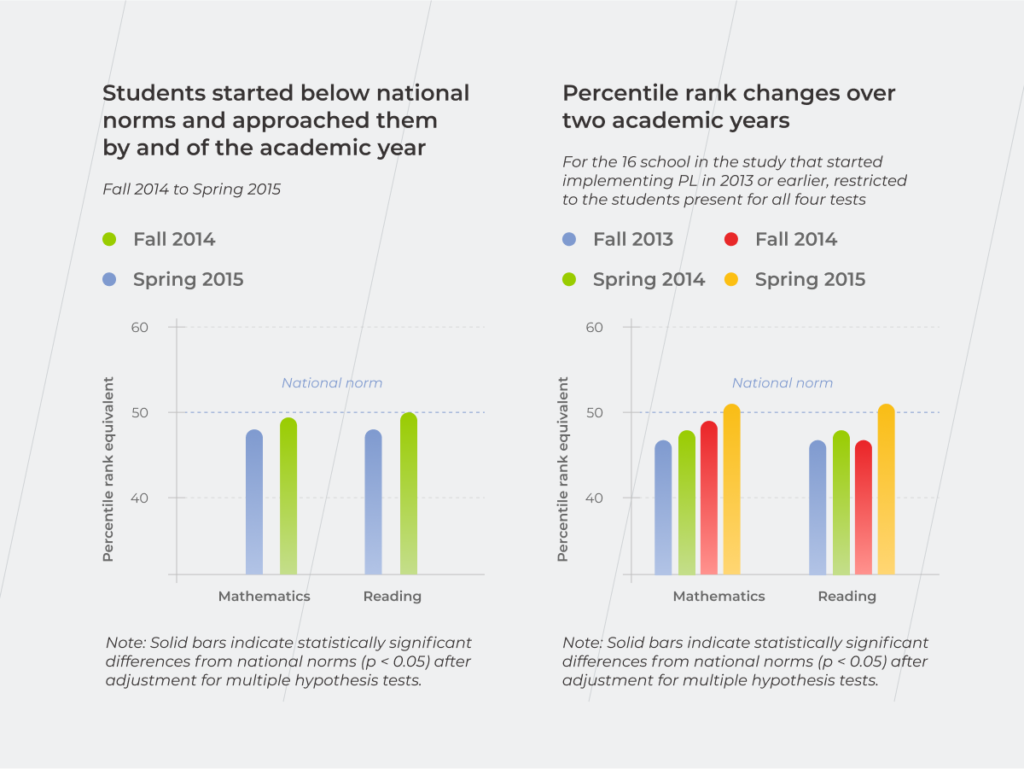
2) Confidence in secure psychological support available at any time
Many schools have a psychologist or counselor available, but just having one is not enough for students to seek help if they need it as they can’t be sure that their private data will be secure. Schools should give students the possibility to both ask for advice or help anonymously and provide them with an opportunity of a personal meeting with the specialist based on their consent. What does this have to do with BI in education? Business Intelligence software allows psychologists to collect the student’s requests and match them with the data about his/her attendance level for a deeper understanding of the situation if the student would like to disclose his/her identity. Such an approach helps schools take better care of the students’ psychological state, the emotional climate in the classes and, for instance, notice bullying cases at early stages.
3) Career planning in high school
Imagine how much easier it can be for students to choose their future profession if the data about their performance in different subjects is collected automatically throughout their whole school life and then presented in a clear dashboard. This way, students get full-fledged digital portraits of themselves reflecting all their strengths and weaknesses. Besides, these dashboards can show the most suitable colleges and universities for admission according to the student’s interests and scores analysis. It’s also possible to highlight subjects or areas where improvement is needed if the student wants to enroll in a particular uni and choose a specific major.
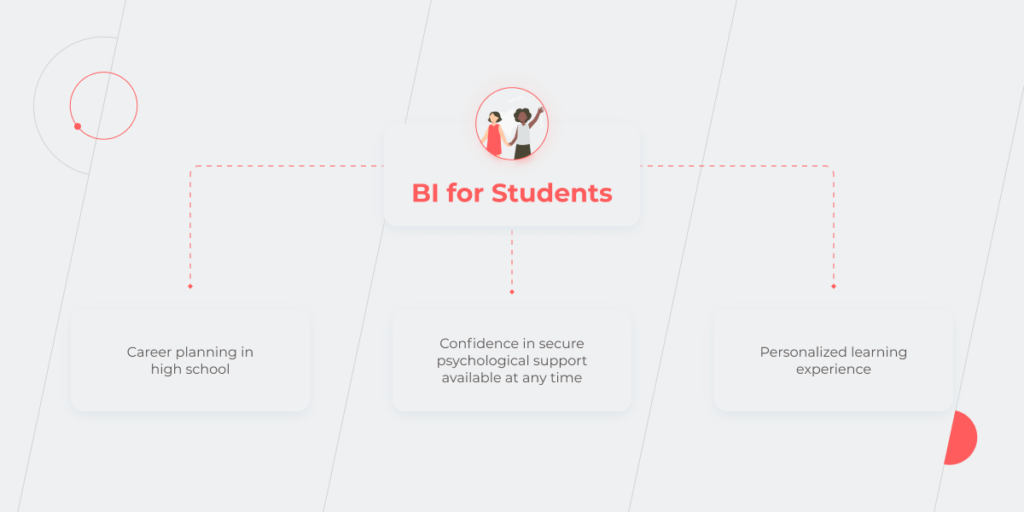
If we put together all the stakeholders whom BI helps in the educational process, we’ll get such a mindmap.
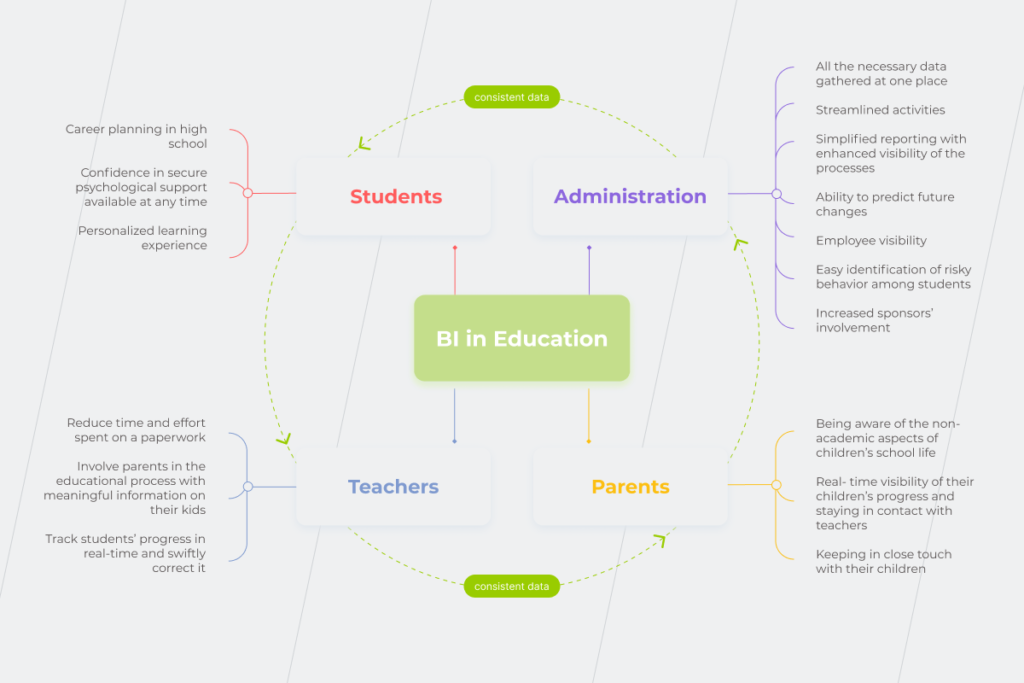
Maximize your opportunities to analyze the data
The possibilities that come with the application of Business Intelligence in education are countless. However, it’s not without a fly in the ointment either. There is so much data to be collected and analyzed, that you may experience paralysis and data fatigue before even starting your Business Intelligence initiative. Therefore, it’s critical to develop a well-thought-out, incremental strategy for implementing BI software – to be determined about what you need is already half the battle. Finding the right technology partner, who can develop and implement either some BI components or a full-fledged solution, should be integral to your project planning. BI specialists with relevant industry experience will help identify all the possible pitfalls in advance and achieve the desired goals in the most efficient way, so that you only have to enjoy how Business Intelligence is changing the way you work for the better.
To find out what to start with, book a consultation with our BI experts.
FAQ
Just like in any other industry, Business Intelligence in the education sector helps provide all stakeholders with relevant data in an easy-to-understand form even for non-technical users. The specifics of BI in education are that there are many stakeholders in the educational process, so the technology helps them all at once to stay connected. At the elementary and secondary education levels, there are school administrators, teachers, students, and their parents who can leverage BI to collaborate, putting the child at the center of the education process.



